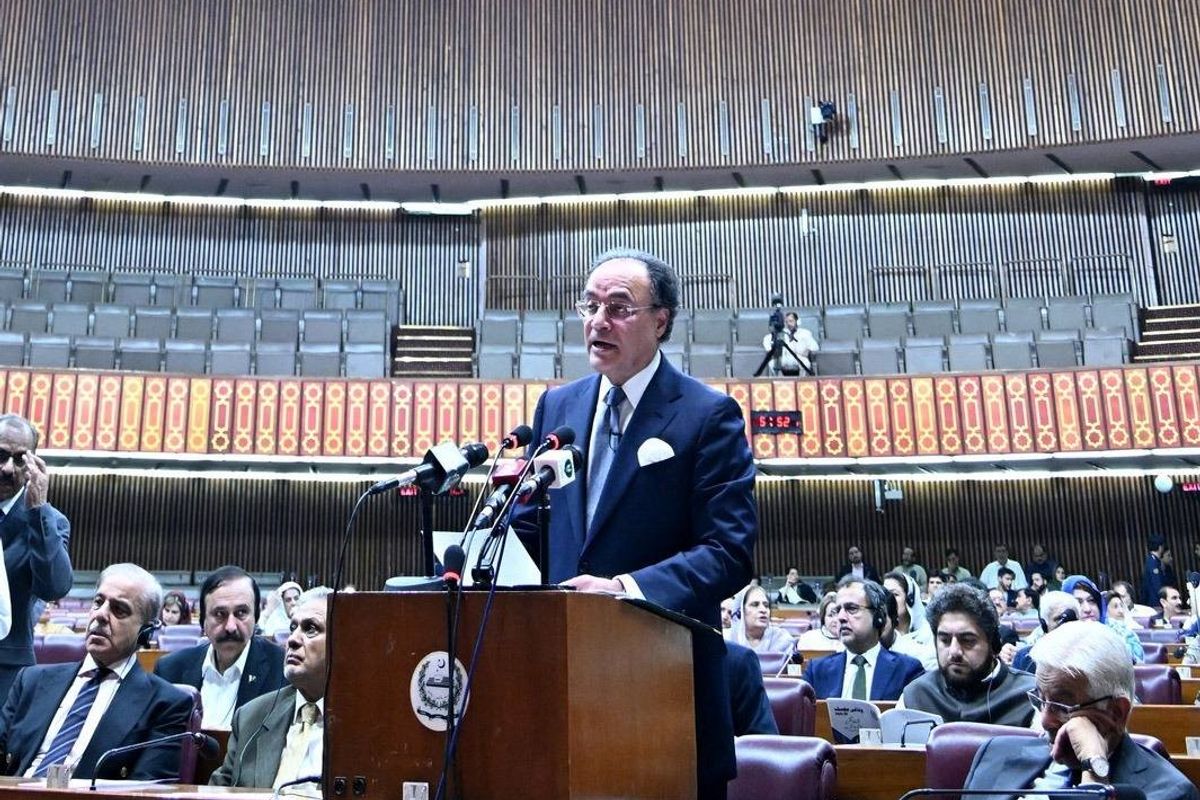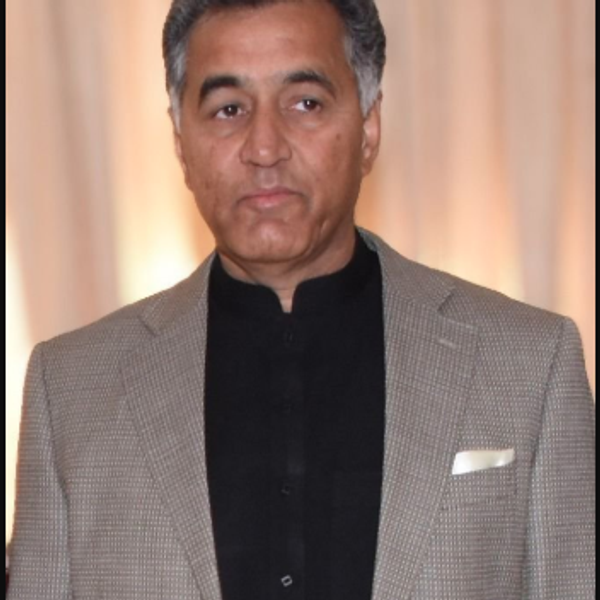Pakistan unveils budget amid IMF pressures, rising defense costs
Govt sets ambitious revenue target of PKR 14.13 trillion — a 18.7% increase over projected revenue collection for outgoing year

Haris Zamir
Business Editor
Experience of almost 33 years where started the journey of financial journalism from Business Recorder in 1992. From 2006 onwards attached with Television Media worked at Sun Tv, Dawn Tv, Geo Tv and Dunya Tv. During the period also worked as a stringer for Bloomberg for seven years and Dow Jones for five years. Also wrote articles for several highly acclaimed periodicals like the Newsline, Pakistan Gulf Economist and Money Matters (The News publications)

Pakistan Finance Minister Muhammad Aurangzeb presents the budget for fiscal year 2025-2026 in the National Assembly on June 10, 2025.
National Assembly/Facebook
Pakistan on Tuesday unveiled its federal budget for the 2025–26 fiscal year (July–June), setting an ambitious revenue target of PKR 14.13 trillion — a 18.7% increase over the projected revenue collection for the outgoing year.
Presenting the budget in Parliament, Finance Minister Muhammad Aurangzeb stated that the government’s approach was forming an economy that “provides the fruits of progress to every class and ensures the protection of environment and resources while paving the way for sustainable development”.
“This budget comes at a crucial and historic moment in the country’s history, when the nation put on a rare display of unity, resolve, and courage,” the finance minister said in reference to the recent Pakistan-India conflict.
The finance minister stated that over the past year, the country successfully undertook the journey of economic recovery, reforms, and development with national unity and resolve.
“Through economic reforms, fiscal discipline, and development planning, we have not only provided stability to the economy but also strengthened the foundations for the future,” he added.
Reducing fiscal deficit
The finance minister said the government aims to reduce the fiscal deficit to 5.0% of GDP next year, down from 5.9% this year.
"Based on initial assessment, Budget FY26 continues the government's commitment to fiscal consolidation under IMF guidance," said Mohammed Sohail, CEO of Topline Securities. He noted that the lower fiscal deficit target represents a major improvement driven by stronger tax measures and better expenditure control.
"This discipline is key to economic stability," he added.
Analysts say the lower deficit target is largely based on expectations of falling interest rates, which would reduce the government's borrowing costs.
The government projects GDP growth of 4.2% for the upcoming year — more optimistic than the International Monetary Fund's (IMF) forecast of 3.6%. The economy is estimated to have grown 2.7% in the current fiscal year ending June 30, up slightly from 2.5% last year. The figure is broadly in line with the IMF's estimate of 2.6%, but below the government's original 3.6% target, which was revised down to 2.7% last month.
Relief for salaried class
"The Prime Minister has always endeavored to minimize the tax burden on salaried and pensioner classes," the finance minister said. He explained that the relief "will not only make tax compliance easier but also reduce the tax burden on middle-income earners, ensuring a balance between inflation and take-home salary."
The government also announced significant tax rate reductions across income slabs, with those earning up to 1.2 million rupees seeing their tax rate cut from 5 percent to just 1 percent.
"The government is aware that skilled and educated individuals constitute the most valuable human resource of any nation, yet they face the highest tax burden," the finance minister noted, announcing a 1 percent surcharge reduction for high earners to "prevent Brain Drain from the country."
However, taxes on passive income — including earnings from bank deposits and investments — have been increased.
The government also raised its target for the petroleum development levy (PDL), a key revenue stream, to PKR 1.31 trillion for next year, up from PKR 1.12 trillion this year.
Defense spending hiked at expense of PSDP
Defense spending, by contrast, is set to rise nearly 25% to PKR 2.65 trillion, up from PKR 2.12 trillion. The increase was widely expected following last month's military standoff with India.
"National defense is the government's most important priority," the finance minister declared while announcing the allocation.
He justified the increase by citing security concerns, stating: "Given the country's security situation and the dangers faced at the borders, and in recognition of the commendable services performed by the armed forces for border protection, a special relief allowance is proposed for armed forces personnel and soldiers/JCOs."
Meanwhile, federal public sector development spending has been cut sharply to PKR 1,000 billion, down from PKR 1,100 billion this year. The finance minister acknowledged that "the Federal Development Program (PSDP) is an important tool for mobilizing the country's and people's resources and promoting development across different sectors of the economy," despite the reduction — a move analysts say signals a shift toward austerity.
Moving forward
With a total outlay of PKR 17.6 trillion, the budget is seen by analysts as broadly in line with IMF conditions — prioritizing fiscal consolidation over expansion. This compares with a budget size of PKR 18.88 trillion for the current year, with the reduction in budget size largely coming from lower interest payments.
The finance minister outlined an ambitious vision for the future, saying the budget "initiates a practical strategy for establishing a Competitive Economy that will increase exports [and] can remove the imbalance between imports and exports while simultaneously promoting Economic Productivity."
"Our budget's policy is that we bring fundamental changes and transform the DNA of the economy," he declared.
Going forward, analysts say the challenge for the government is to move beyond this perpetual stabilization phase and focus on growth.










Comments
See what people are discussing